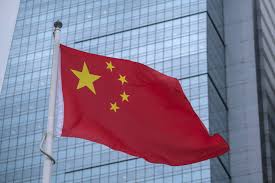
In an unexpected move on Monday, China's central bank reduced a key interest rate for the second time this year and withdrew some cash from the banking system in an attempt to stimulate credit demand and sustain the COVID-hit economy.
Economists and observers say Chinese authorities are eager to help the slow economy by allowing a growing policy divergence with other major nations that are aggressively boosting interest rates.
The People's Bank of China (PBOC) announced a 10-basis-point (bps) reduction in the rate on 400 billion yuan ($59.33 billion) of one-year medium-term lending facility (MLF) loans to some financial institutions to 2.75 per cent from 2.8 per cent%.
In a recent poll of 32 market observers, all projected that the MLF rate would remain steady, while 29 predicted a partial rollover.
"The rate cut surprises us," said Xing Zhaopeng, senior China strategist at ANZ.
"It should be a response to the weak credit data on Friday. The government remains cautious about growth and will not let go."
In July, new bank lending in China fell more than predicted, while broad credit growth slowed, as new COVID flare-ups, job-related concerns, and a worsening property crisis made enterprises and consumers reluctant of taking on additional debt.
The PBOC stated that their decision was made to "maintain banking system liquidity reasonably abundant." With 600 billion yuan in MLF loans maturing, the procedure resulted in a net fund withdrawal of 200 billion yuan.
Market players have priced in the partial rollover partly because the banking sector was already replete with cash, with interbank money rates hanging at two-year lows and persistently below policy rates.
"Now with hindsight, today's 10-bp cut may be seen as 'front-loading' before the policy room gets narrower going forward as the PBOC sees structural inflation pressure," said Frances Cheung, rates strategist at OCBC Bank.
In its second-quarter monetary policy report, the PBOC maintained that it will push up execution of its cautious monetary policy and keep liquidity relatively plentiful, while closely monitoring domestic and external inflation developments.
"Despite the warning of inflation risk and flush liquidity condition, the dominating downside risks under the COVID spread and property-sector rout prompted the PBOC to cut rates to stimulate demand," said Ken Cheung, chief Asian FX strategist at Mizuho Bank.
In early trade following the rate announcement, China's 10-year treasury futures rose more than 0.7 per cent, while sovereign bond yields declined about 5 basis points.
According to an online statement, the central bank also injected 2 billion yuan through seven-day reverse repos while lowering borrowing costs by the same margin of 10 basis points to 2.0 per cent from 2.1 per cent.
In January, the PBOC cut both rates by 10 basis points.
(Source:www.theglobeandmail.com)
Economists and observers say Chinese authorities are eager to help the slow economy by allowing a growing policy divergence with other major nations that are aggressively boosting interest rates.
The People's Bank of China (PBOC) announced a 10-basis-point (bps) reduction in the rate on 400 billion yuan ($59.33 billion) of one-year medium-term lending facility (MLF) loans to some financial institutions to 2.75 per cent from 2.8 per cent%.
In a recent poll of 32 market observers, all projected that the MLF rate would remain steady, while 29 predicted a partial rollover.
"The rate cut surprises us," said Xing Zhaopeng, senior China strategist at ANZ.
"It should be a response to the weak credit data on Friday. The government remains cautious about growth and will not let go."
In July, new bank lending in China fell more than predicted, while broad credit growth slowed, as new COVID flare-ups, job-related concerns, and a worsening property crisis made enterprises and consumers reluctant of taking on additional debt.
The PBOC stated that their decision was made to "maintain banking system liquidity reasonably abundant." With 600 billion yuan in MLF loans maturing, the procedure resulted in a net fund withdrawal of 200 billion yuan.
Market players have priced in the partial rollover partly because the banking sector was already replete with cash, with interbank money rates hanging at two-year lows and persistently below policy rates.
"Now with hindsight, today's 10-bp cut may be seen as 'front-loading' before the policy room gets narrower going forward as the PBOC sees structural inflation pressure," said Frances Cheung, rates strategist at OCBC Bank.
In its second-quarter monetary policy report, the PBOC maintained that it will push up execution of its cautious monetary policy and keep liquidity relatively plentiful, while closely monitoring domestic and external inflation developments.
"Despite the warning of inflation risk and flush liquidity condition, the dominating downside risks under the COVID spread and property-sector rout prompted the PBOC to cut rates to stimulate demand," said Ken Cheung, chief Asian FX strategist at Mizuho Bank.
In early trade following the rate announcement, China's 10-year treasury futures rose more than 0.7 per cent, while sovereign bond yields declined about 5 basis points.
According to an online statement, the central bank also injected 2 billion yuan through seven-day reverse repos while lowering borrowing costs by the same margin of 10 basis points to 2.0 per cent from 2.1 per cent.
In January, the PBOC cut both rates by 10 basis points.
(Source:www.theglobeandmail.com)





